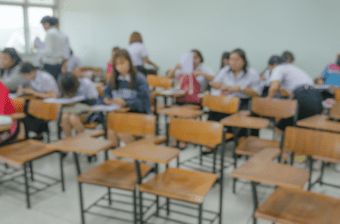Although most schools have daily attendance rates of well over 90 percent, according to the newly released U.S. Department of Education Civil Rights Data Collection (CRDC), about 8 million students in the United States missed more than three weeks of school during the 2015–16 school year (CRDC 2015–16). This represents an increase over the 6.8 million students who missed more than three weeks of school during the 2013–14 school year. These students were chronically absent.
The building block that must be in place to meet student achievement and high school graduation goals is attendance. Physically being present in school is one of the most basic conditions for a student’s success – if students are not in school, they are not learning what is being taught and could be falling behind in earning the course credits needed to graduate.
In a new video, I use building blocks to illustrate the ways in which poor attendance impacts both chronically absent students and their classmates with better attendance.
What should schools focus on to improve student outcomes?
As background, in the past two decades of school accountability, policies have directed schools to improve on key indicators of student success. No Child Left Behind (NCLB; 2002) required schools to improve student achievement on reading and math as well as increase high school graduation rates. The Every Student Succeeds Act (ESSA; 2015) changed the national structure of NCLB by empowering states to design and implement their own accountability systems. In addition to test-based academic metrics, and, for high schools, graduation rates, ESSA requires states to hold schools accountable for at least one measure of “school quality or student success (SQSS).”
In a 2016 Hamilton Project strategy paper, we recommended that states choose to hold schools accountable for reducing rates of chronic absenteeism as a state’s SQSS metric under ESSA. Since then, 36 states, the District of Columbia, and Puerto Rico have chosen to hold schools accountable for reducing rates of chronic absenteeism through their state-led accountability plans.
In a new Hamilton Project report, we articulate a framework for states as they oversee implementation of statewide accountability plans under ESSA and describe how states differ in their approaches. We present novel analyses of the factors at the school and student levels that relate to chronic absenteeism and describe evidence-based strategies for schools as they work to reduce rates of chronic absence among students.
As parents, teachers, and policymakers, we can take steps to ensure that reducing chronic absenteeism will no longer be a stumbling block for our children, but rather, a building block toward student success.


